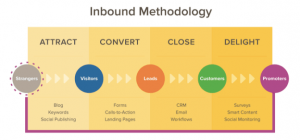
It’s not too late to create – or refine – your Digital Marketing plan. From LinkedIn to Pinterest, you probably may have some strong opinions about which online tools are best aligned to your business strategy. Digital Marketing tools like search engine optimization, social media services, directory listings and marketing automation platforms have completely transformed demand generation; so, why not take the plunge and find out which ones work for you?
In my experience, the average SMB (small and medium business) does not need to be active on every single social media service unless you have the infrastructure and budget to support such an undertaking. (I hope this brings you some inner peace!) On the contrary, success in online demand generation via digital marketing lies mostly in how you use it – not what you use.

No need to fall into the same trap. Let’s begin by exploring the components that could be integral to your next digital marketing plan.
Decoding digital marketing: the checklist
Here are a few components of a comprehensive digital marketing plan, with an explanation of how various levels of organization use it, how target markets use it. More sophisticated digital marketing plans may use more social media tools than others, while smaller entrepreneurial organizations may focus on 1 or 2. As your business grows, so should your strategy. Let’s take a look at some options:
| What is it | Description | What does it include | |
| Strategic | Marketing segmentation | This is the core of your strategy where you should annually revisit how you are aligning your value propositions to the issues and areas of highest interest to your target market. Understanding what motivates your target personas to make buying decisions will empower you to create a meaningful connection with your customers. | Value proposition development
Personas |
| Content Strategy | This is where your content comes from (is it custom generated, curated or both) | Content creation
Content curation |
|
| Tactical | Social media | With over 100 major social networking sites, reaching over 2 billion users, social media is one of the fasting growing – and changing – industry in the world! The most common site where you should consider having a profile include: LinkedIn, Google+, Facebook, Twitter, Instagram, Pinterest, YouTube or Vimeo. Above all, consider which ones are the best for your business before you begin.
There are also some really handy tools like HootSuite that can help you schedule out your posts, but you’ll want to consider that social media’s best used for more than “pushing” content. You’ll want to include “pull” into your strategy as well. |
Increased exposure to potential customers
Varied content – from text to rich media Contesting, polling and other insights features Hyper targeting Powerful reporting and insights on engagement |
| Email marketing account | Don’t be scared by marketing automation. Programs like MailChimp and HubSpot offer affordable, simple solutions for marketing automation. For more robust needs, you may want to consider a concierge tool, instead | Email list segmentation
Creating branded templates in a WYSIWYG toolkit Automation funnel Robust reporting features |
|
| Directory listings | You may be surprised to know that you have 50+ directory listings, most of which you didn’t even sign up for. Every instance of your directory listings must match exactly or your search rankings could be severely impaired. You can set up service for small monthly fee to manage this for you. | Establish a unified NAP (name, address phone number)
Create a short and long description to use consistently across all listings, as well. |
|
| Search optimization | This is the foundation of getting your website to rank organically via on and off site search engine optimization. You’ll also want to make sure you have an analytics tool like Google Analytics (free!) or Raven installed to capture your site reporting and help you understand the traffic patterns. | On page content and site optimization (overall site structure, keyword research and implementation, site structure is mobile responsive/friendly, meta data, robots.txt, are structured properly, etc),
Off page optimization (link building) |
|
| Online advertising | This is where you can target your customers with paid ads or sponsored content to attract prospects and convert them into leads. You can use a tool like Google AdWords for online display and paid search. Social media advertisers like LinkedIn contain free reporting features built into the dashboard, as well. | Social media advertising
Online display advertising & retargeting Paid search advertising Sponsored content |
What’s next?
We believe that when you’re committed to using a social media service to engage with others online, and you build a strategy, it will work for you. When you’re ready to take the next step in your digital marketing strategy, contact us for a free consultation.

